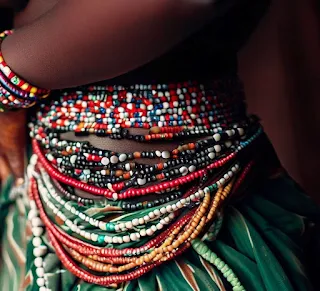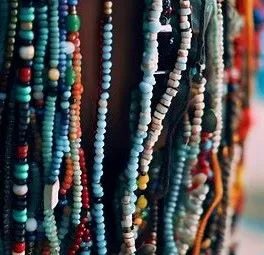The Timeless Beauty and Spiritual Power of African Waist Beads
The Timeless Beauty and Spiritual Power of African Waist Beads
At its core, the practice of wearing waist beads in African culture is a celebration of femininity, fertility, spirituality, and sensuality.
Waist beads are intricate ornaments women wear to express identity, beauty, and belief. This ancient tradition is a living testament to Africa’s cultural richness and enduring influence.
Materials and Colors
Waist beads are crafted from glass, gemstones, seeds, shells, or metals. Each color and material carries symbolism — red for passion, blue for serenity and spirituality, gold for wealth, and green for fertility and renewal. The arrangement of colors creates silent messages about identity and desire.
Making Waist Beads
Artisans handcraft each strand. Beads are strung on strong thread or wire to custom length, then tied securely. This slow, intentional process adds personal and spiritual significance to every piece.
Symbolism and Personal Expression
Some women wear waist beads to celebrate sensuality or track weight changes. Others view them as protective charms or spiritual anchors connecting them to ancestors and inner strength.
Wearing and Caring
Beads rest at the waist or hips — hidden under clothing or shown proudly. They should be handled gently and removed before swimming or bathing to preserve their beauty.
Where Waist Beads Are Popular
- Nigeria (Yoruba): Ileke beads mark puberty and celebrate femininity.
- Ghana (Krobo): Dipo beads used in rites of passage to womanhood.
- Senegal (Wolof): Noppë beads signal marital status and fertility.
- Uganda (Baganda): Amapindi worn for beauty and traditional dance.
- South Africa (Zulu & others): Used for fertility, protection, and adornment.
- Tanzania (Maasai): Malkia beads symbolize beauty and social status.
Spirituality and Ancestral Connection
In many African traditions, waist beads strengthen connection to ancestors and balance spiritual energy. They appear in rituals — puberty, weddings, fertility rites — as symbols of protection and blessing.






